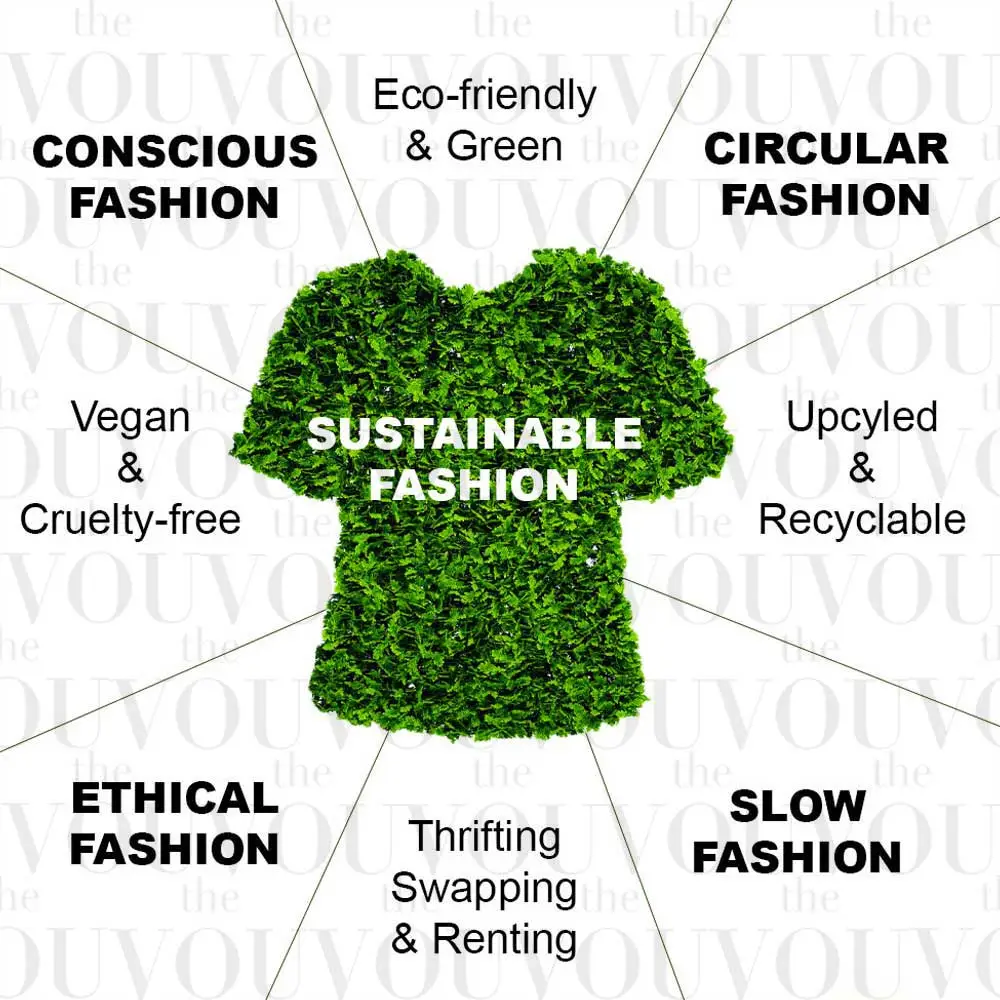

The future of Sustainable Fashion: How consumer concern for ethics and the environment have forced the fashion industry to rethink the way it makes clothes.
The fashion industry represents a crucial part of virtually every economy. Currently, according to the McKinsey Global Fashion Index, the landscape is worth an estimated $2.4 trillion. Fashion companies employ more than 75 million people worldwide, and distribute clothing to people all over the world.
However, while the fashion sector is booming, increasing attention has been brought to the production and manufacturing processes of countless brands. Customers are beginning to realise that certain types of fashion don’t just cost money; they also have a direct impact on the planet they live on. In fact, fashion accounts for around 10% of our global carbon dioxide output.
Researchers have also discovered that the fashion industry produces more than 1.2 million metric tons of CO2 each year. In 2018, it created more greenhouse gas emissions than the UK, France, and Germany combined. As consumers grow increasingly environmentally conscious, companies need to be willing to adjust their approach to production and manufacturing if they want to retain revenue.
In fact, 67% of customers now say they use of sustainable processes and materials are important factors when they’re deciding whether to buy from a fashion brand.
What is Sustainable Fashion? Understanding the Industry
“Sustainable Fashion” can be a complex topic to fully understand. In general, sustainable fashion brands are simply companies who create fashion in a way that’s more considerate of humanity and the environment. They look for ways to reduce their negative footprint on the planet, without compromising on the quality of their garments.
There are numerous ways companies can make themselves more “sustainable”. Some focus on using entirely recycled materials, or natural components in their clothing. Others eliminate dangerous chemicals and toxins from their processes. Perhaps one of the most important areas companies can focus on when pursuing sustainability is “waste”.
Around 85% of all textiles are sent to the dump each year, and less than 1% of clothing is recycled to make new garments. In 2017, the leading company Burberry even burned up to $37 million worth of unsold perfume, bags, and clothing. Waste in the fashion industry doesn’t just have an impact on profitability, it also significantly damages the planet, and demands the use of more crucial resources, from essential fibers, to water.
Cutting down on the issue of waste in fashion industry can deliver benefits such as:
- Preserved natural resources: The fashion industry has an average annual resource input of 98 million tons. This includes oil to produce synthetic fibers, fertilisers to grow cotton, and endless chemicals needed for finishing items. Sustainable companies aim to reduce their use of resources, focusing on accessing only the solutions they need, as they need them.
- Reduced water consumption: It takes up to 2,700 litres of water to produce a single t-shirt in some fashion landscapes. This places a significant strain on one of the most important resources our planet has. Reducing the waste of water by leveraging sustainable practices could lead to the availability of more healthy water for the planet.
- Lower chemical use: Fast fashion items in particular tend to involve a lot of chemical processes before they end up in a store. Some of these chemicals pose a significant danger to the health of humans, animals, and plant life. They can even end up infecting ocean waters when items are left in landfills. Sustainable fashion practices can involve the use of safer, healthier components to create attractive garments.
Creating a New Era for Sustainable Fashion
The good news is the demand for sustainable fashion is increasing. On average, the growth rate for the ethical fashion market is expected to reach around 9.7% per year by 2030. Consumers are beginning to make more careful choices about where they access the garments they wear. This includes looking for retailers who take measured efforts to reduce waste and chemical use.
One of the easiest ways for companies to adhere to the demand for more sustainable fashion, is to embrace a new, waste-free business model. For instance, print-on-demand, or “production on-demand” companies only produce items when an order has already been placed. This allows for more conscious shopping, and a more ethical production process.
Some pioneering POD companies have already begun to implement sustainable practices into their business models. However, many are starting with small changes, providing companies with simple solutions which place prints on blank products that have already been produced, and have already had an impact on the planet. Fortunately, there is an alternative.
Companies like NovaTomato have built an entirely new business model based on creating fashion on demand. This unique company allows designers and creators to build their own range of clothing options online, without having to rely on pre-set templates. Companies can access partners on-demand for producing yarn and fabric, and they don’t need to maintain any of their own inventory.

Unlike other POD brands, NovaTomato not only reduces waste for the fashion company, but also overall resource wastage. Products aren’t made in advance to add a print on top. Users specifically create the unique solutions they want from scratch when an order is placed. This allows for not just more unique fashion items, but more sustainable garments too.
NovaTomato also leverages eco-friendly fabrics and materials throughout the production process, using as much recycled fabric and materials as possible for not just clothing creation, but also packaging and hanging tags. They only work with socially responsible and ethical businesses, and hold themselves to the highest standards.
It’s Time to Invest in Sustainable Fashion
Innovative companies prove there is a better alternative out there to wasteful, fast-fashion production strategies. Working with the right supplier to build your own fashion brand means you can set yourself apart as a truly green, and ethical business. Not only does this save fashion companies money on producing garments, but it also helps them to appeal to a growing audience.
Currently, 73% of millennials say they’re willing to pay more for sustainable brands, and 72% of consumers are growing increasingly aware of the ethical issues facing the current fashion industry. Adhering to a new strategy of sustainable fashion production ensures business leaders can “future-proof” their operations, and pave the way for a healthier tomorrow.






